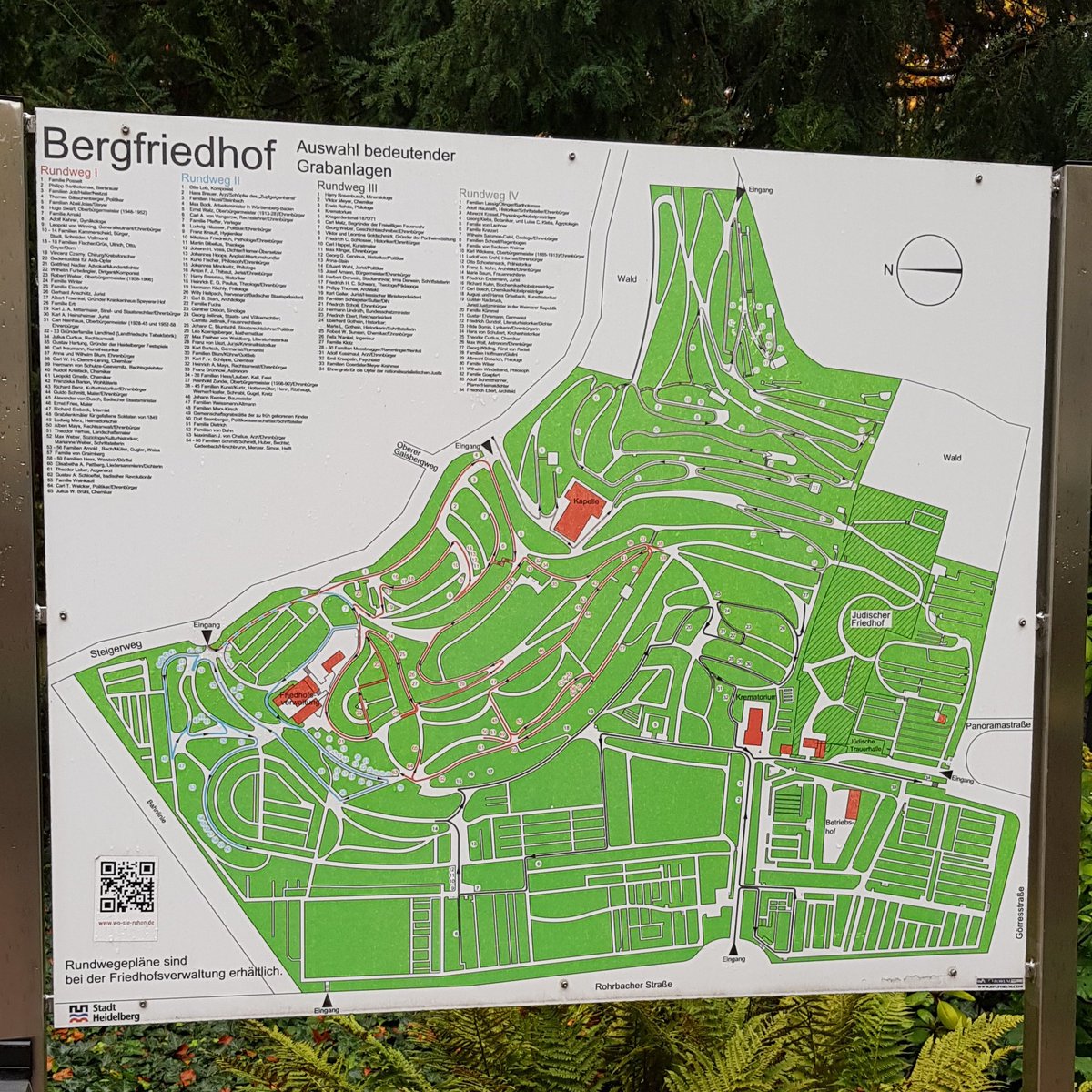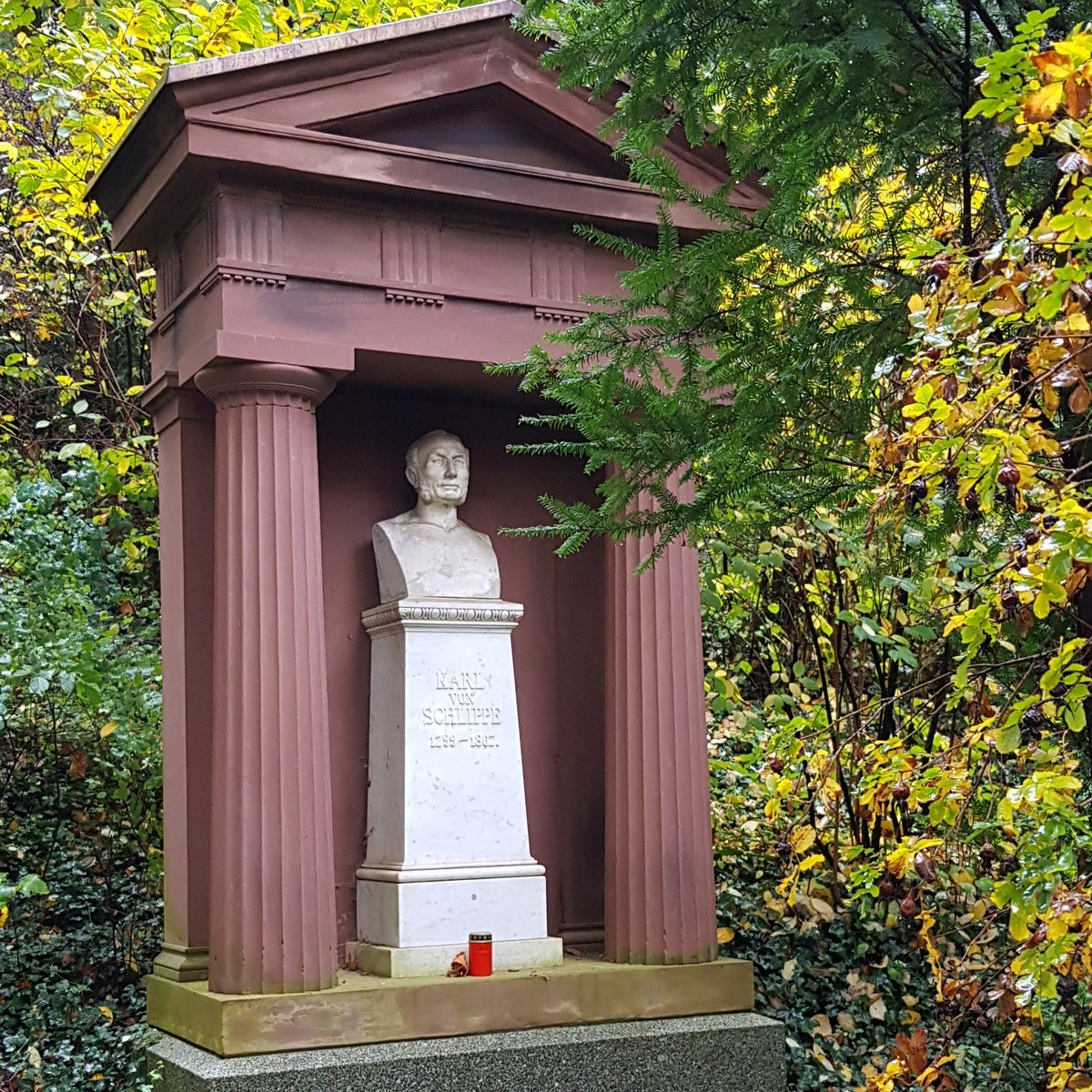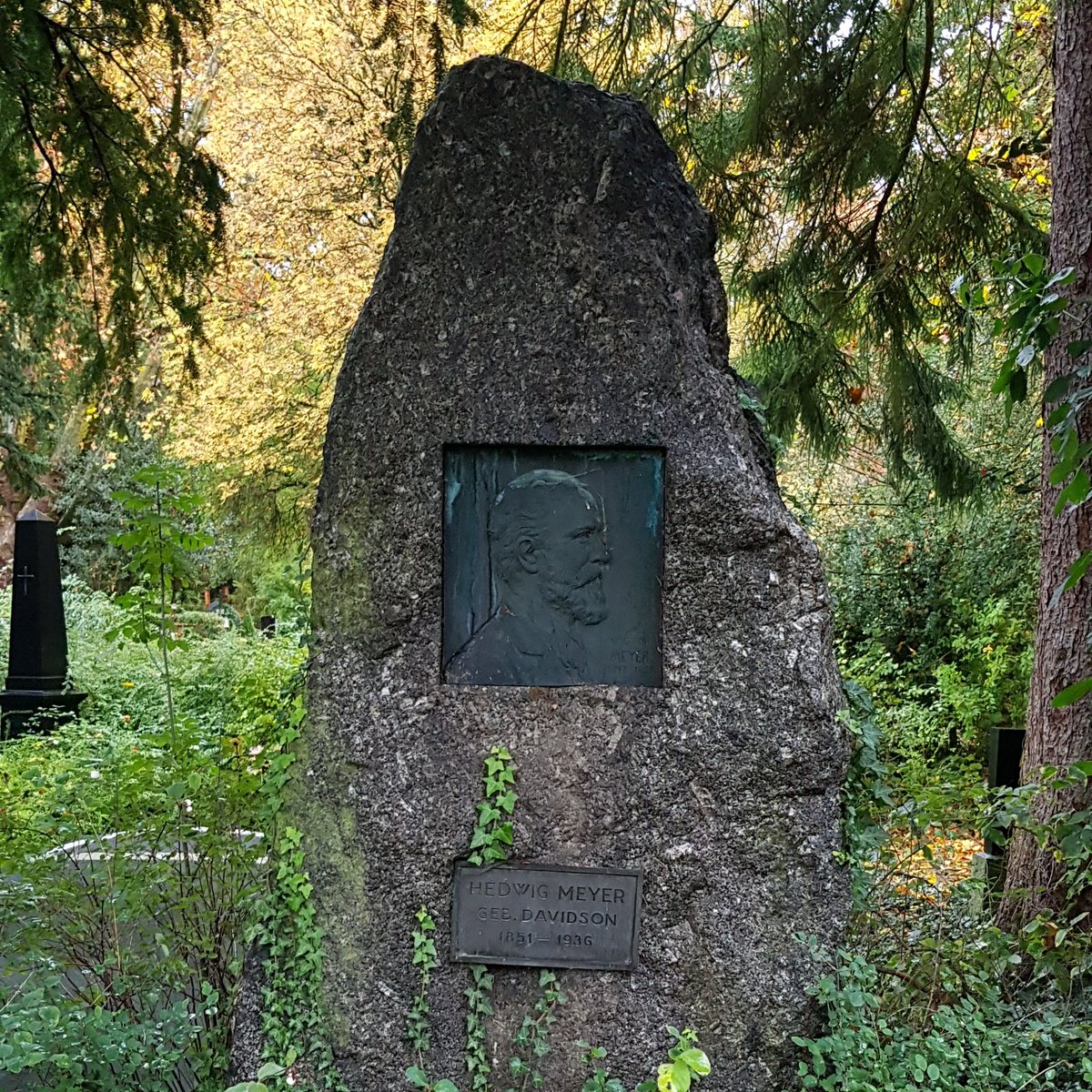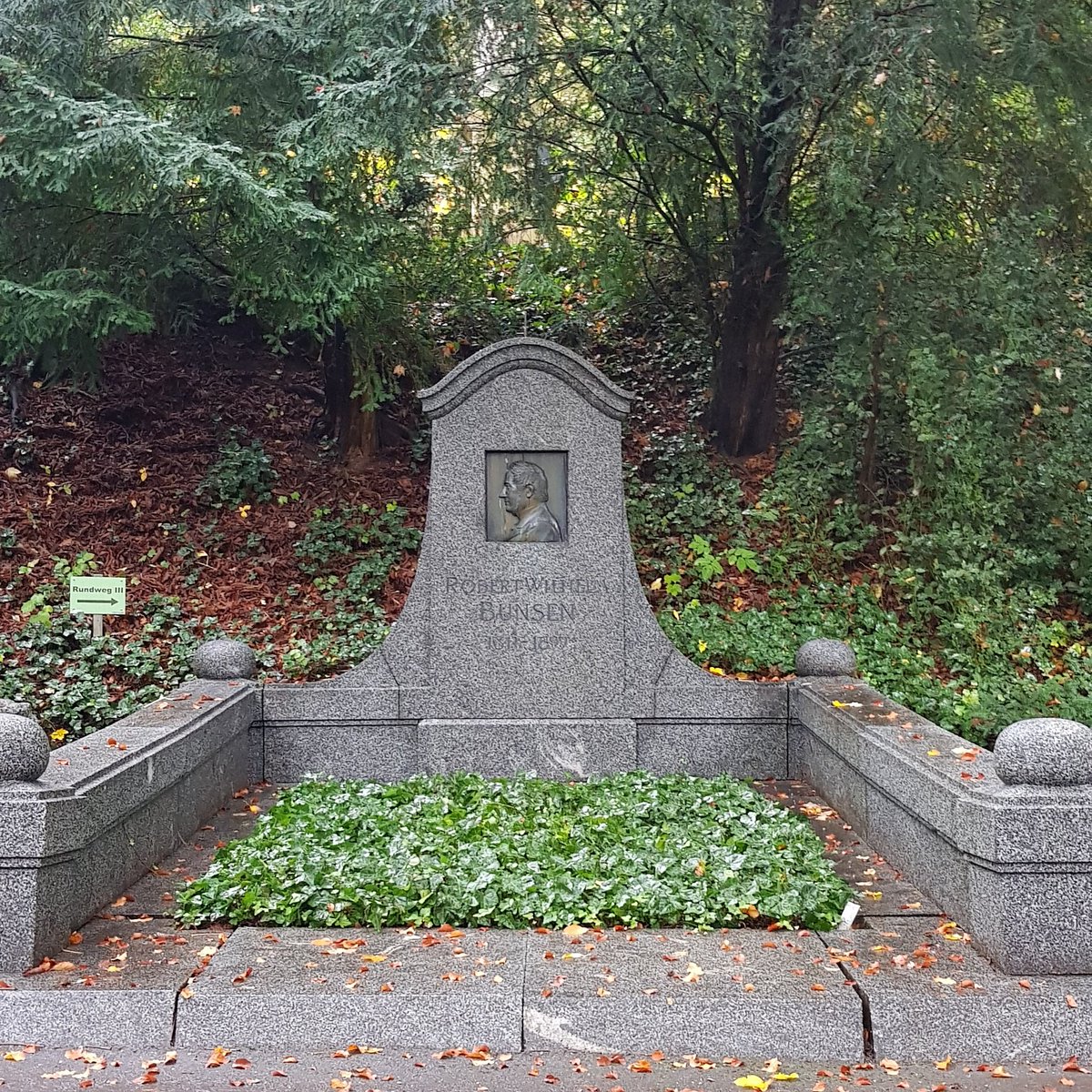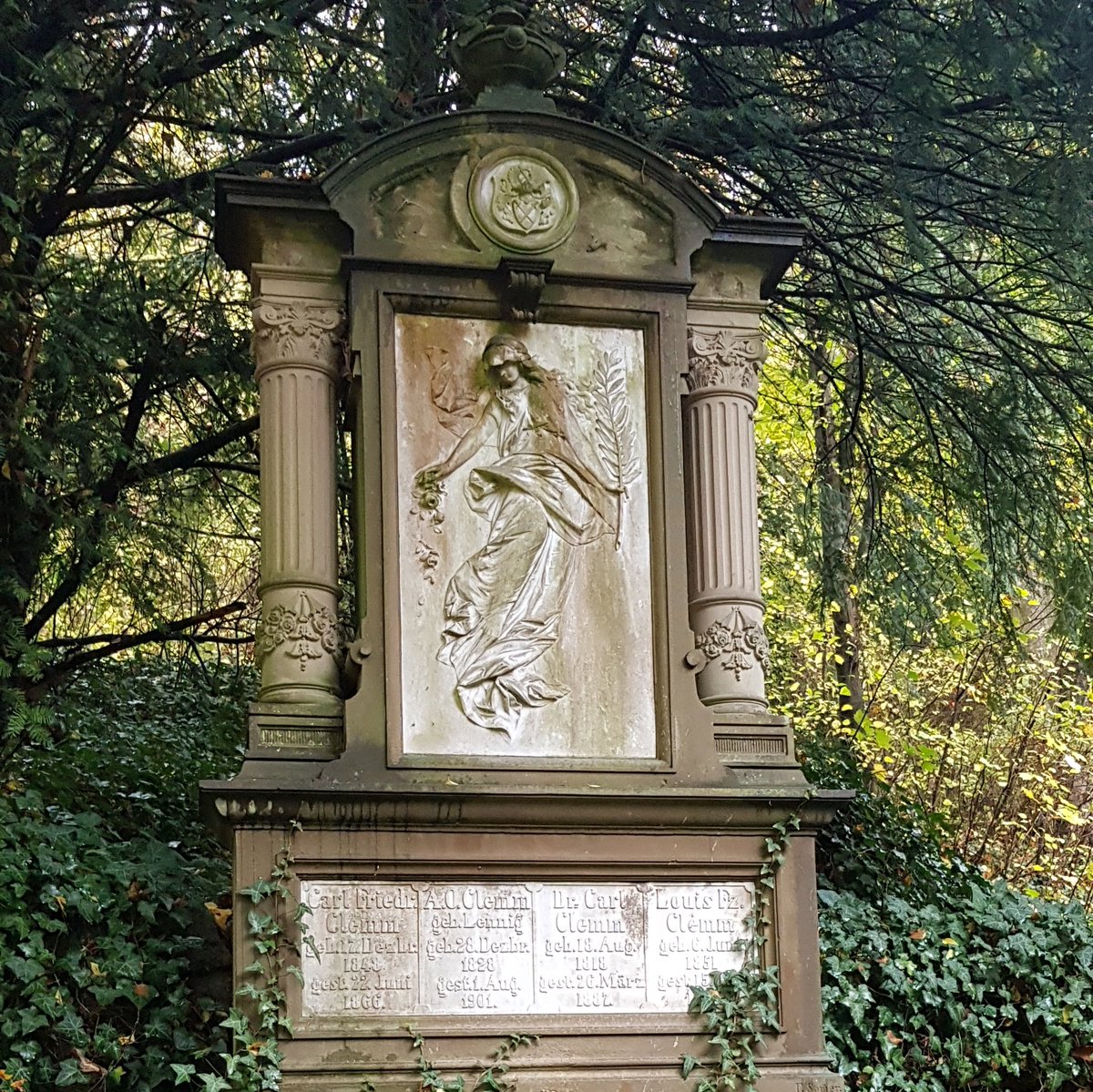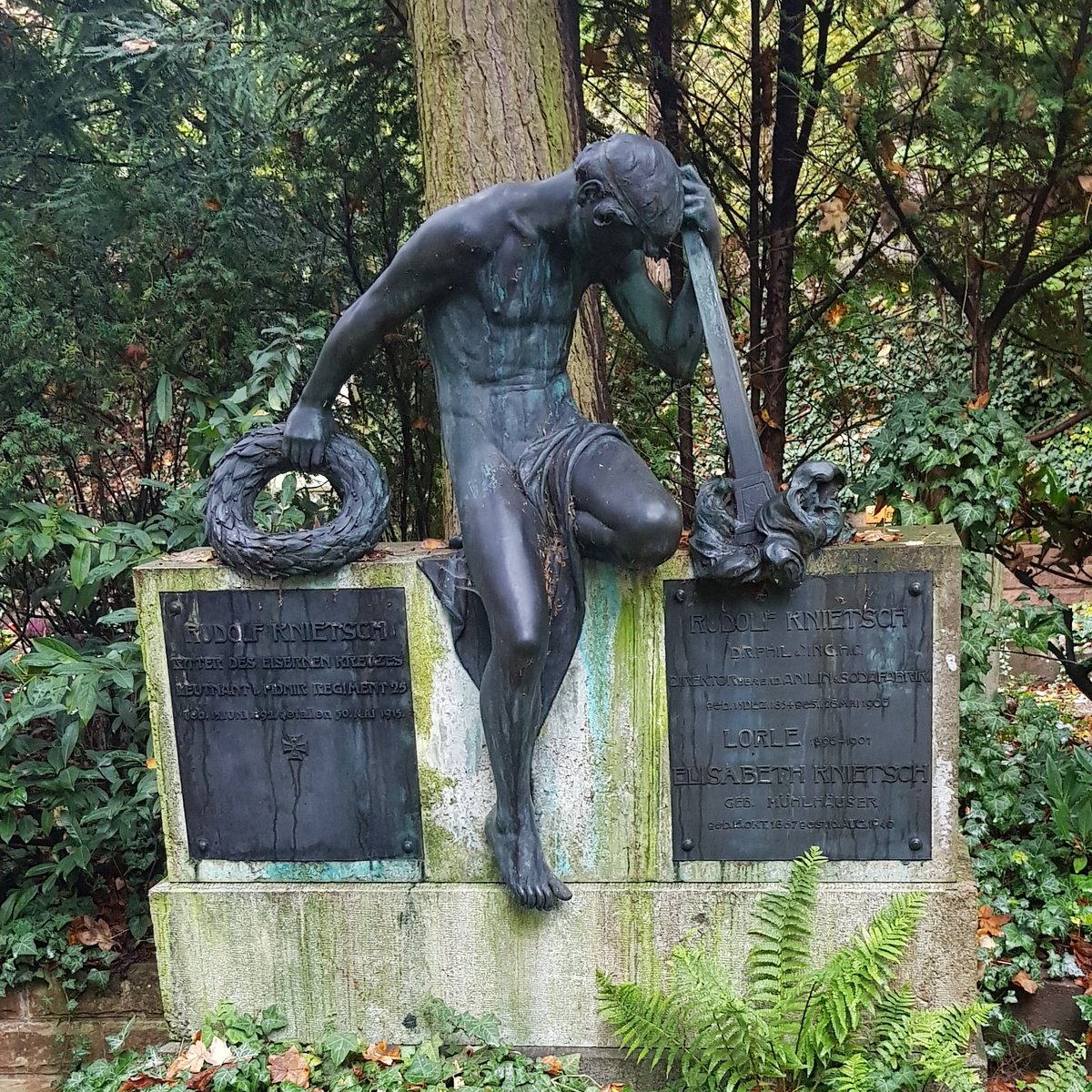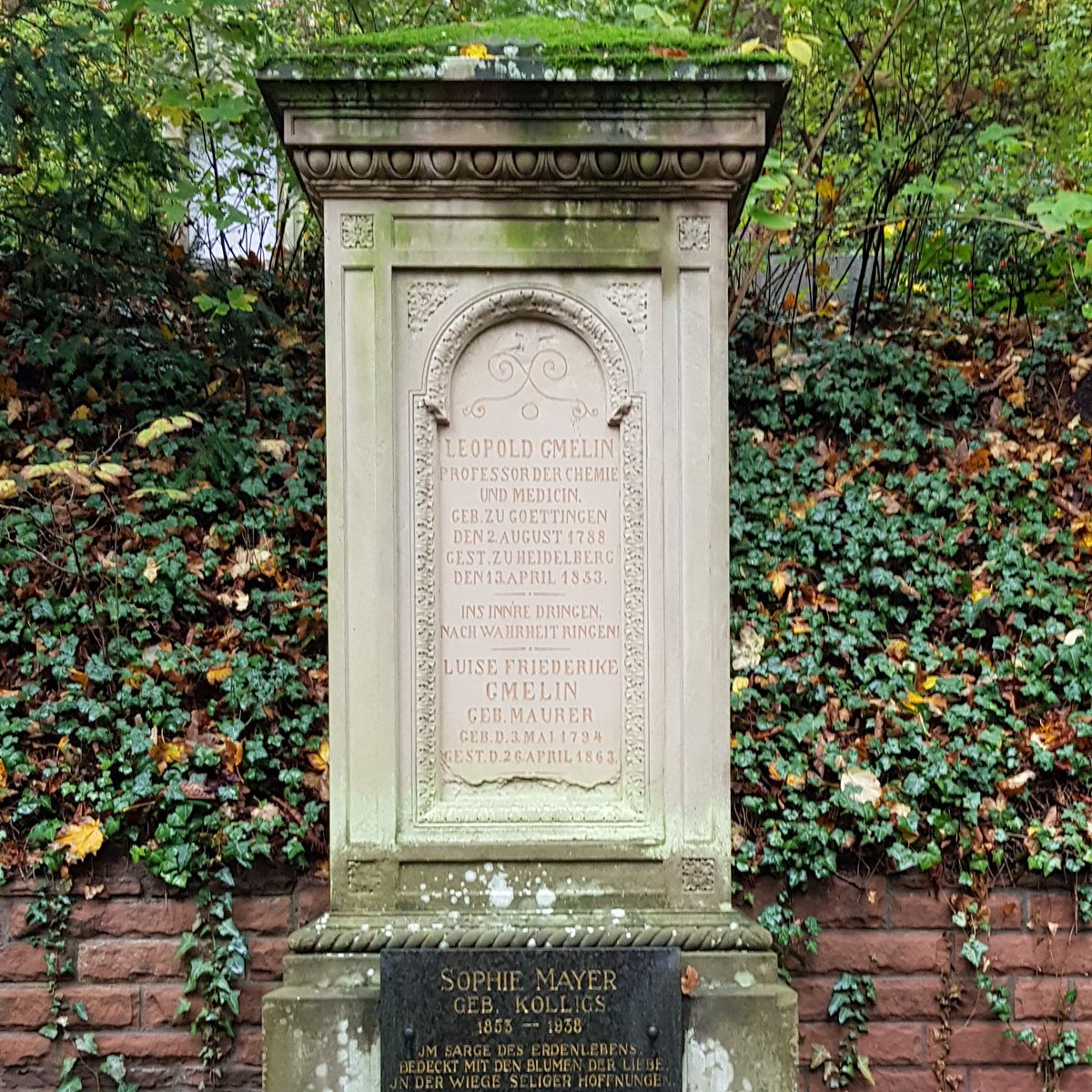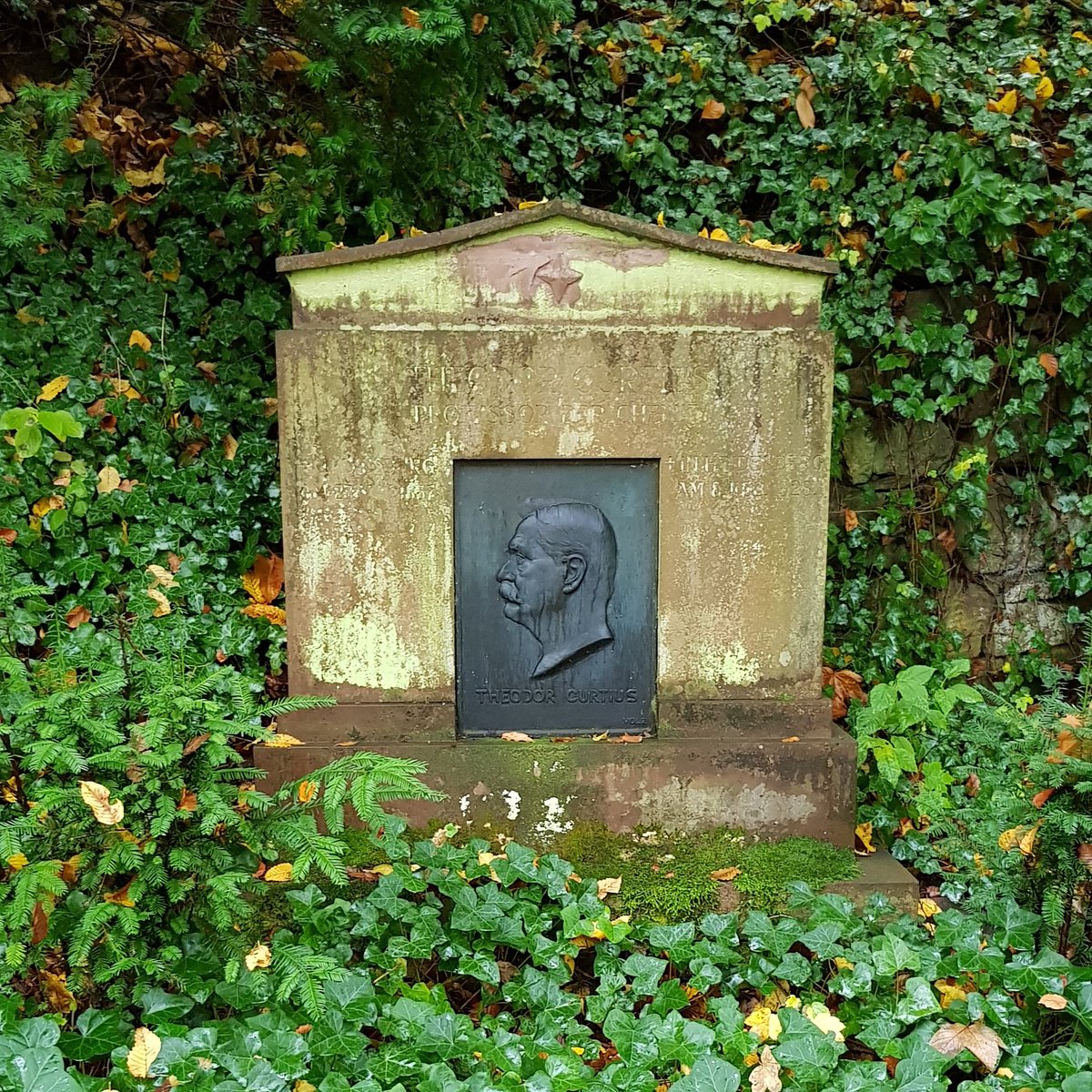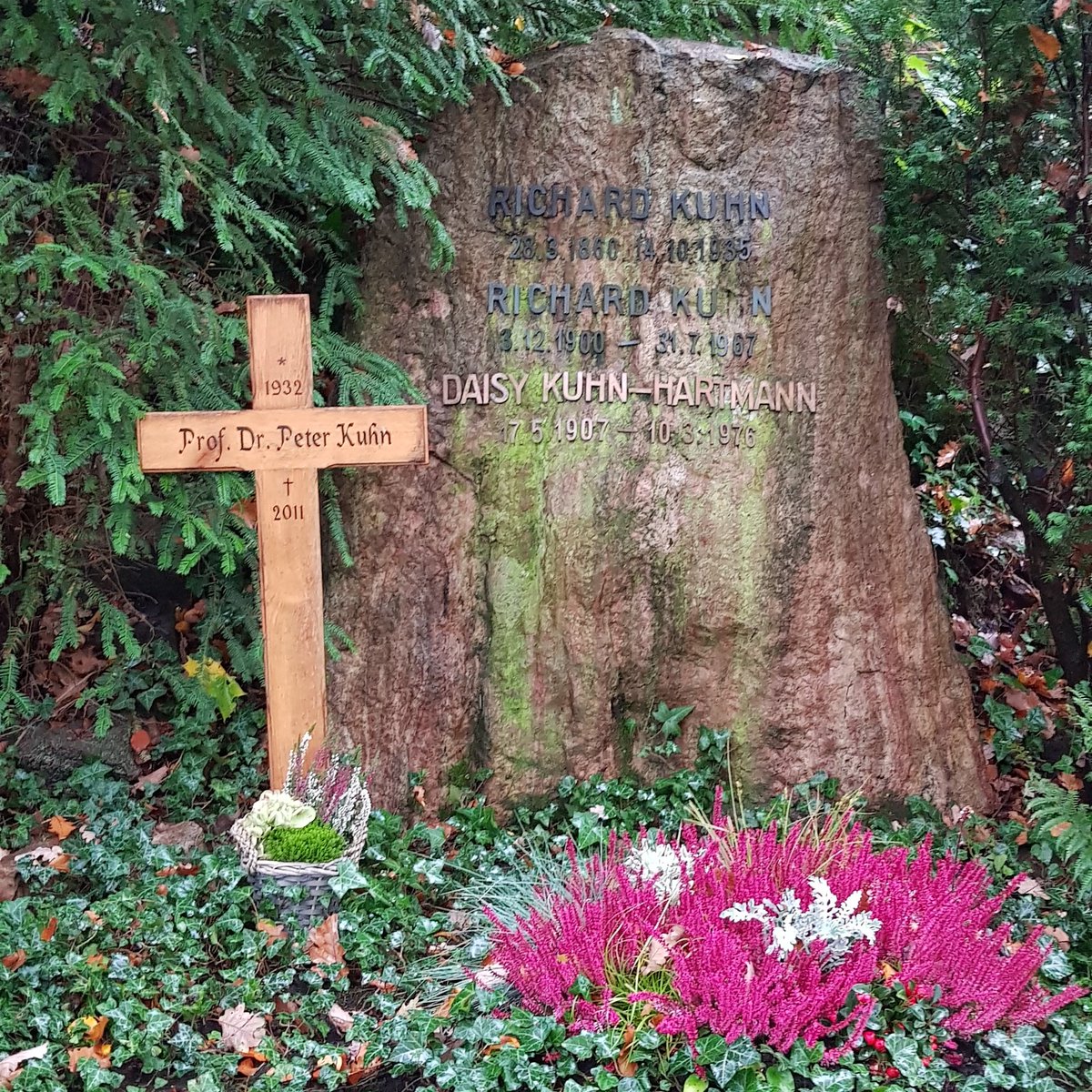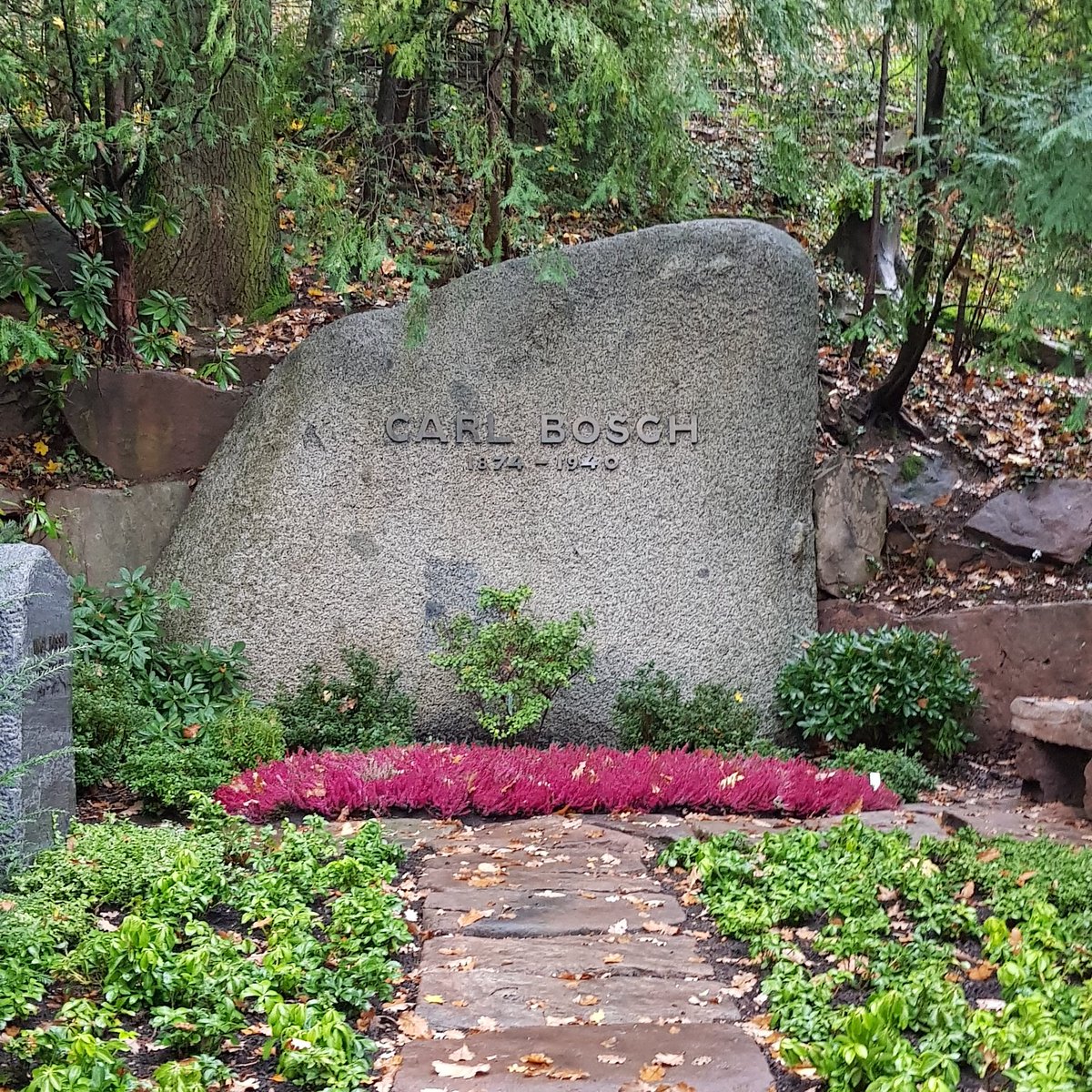All Saints Day here in the Catholic South of Germany. A bank holiday where people visit family graves. So I went to the Bergfriedhof in Heidelberg and did a tour of notable chemists. If anybody is interested I can take you on a quick tour starting at a side entrance.
The cemetery goes up the hill and it a pretty nice place to walk around. They also have set walks around the space and I basically just looked up the chemists and then stitched together a walk.
First up Karl Von Schlippe who spent most of his career in Russia working on useful industrial chemistry. He died while visiting a spa town in Hessen a little to the north of Heidelberg. (Wiki page in German: https://de.wikipedia.org/wiki/Karl_von_Schlippe)
Next up Julius Brühl who worked on spectrochemistry and helped bring evidence for the structure of the "benzene "ring"" as his obituary describes.
(Nature obit: https://www.nature.com/articles/085517a0; Wiki page in German https://de.wikipedia.org/wiki/Julius_Wilhelm_Br%C3%BChl)
(Nature obit: https://www.nature.com/articles/085517a0; Wiki page in German https://de.wikipedia.org/wiki/Julius_Wilhelm_Br%C3%BChl)
Viktor (or Victor) Meyer, studied under Bunsen and came back later to replace him as professor of chemistry. His career was cut short but his work saw him awarded the Davy Medal by the Royal Society.
(Nature obit: https://www.nature.com/articles/056449a0; Wiki: https://en.wikipedia.org/wiki/Viktor_Meyer)
(Nature obit: https://www.nature.com/articles/056449a0; Wiki: https://en.wikipedia.org/wiki/Viktor_Meyer)
Speaking of Bunsen (who knew all three of the prev chemists)... Robert Bunsen studied the emission spectra of elements, discovered caesium and rubidium, developed his eponymous burner. Davy Medal winner along with a few others.
(Wiki: https://en.wikipedia.org/wiki/Robert_Bunsen)
(Wiki: https://en.wikipedia.org/wiki/Robert_Bunsen)
Just a bit along from Bunsen are two of the chemists who helped with a local company known as the Badische Anilin und Soda Fabrik. These days that company goes by its initials BASF.
Then a little way along from there is Leopold Gmelin who worked on physiological chemistry and developed his eponymous test for detecting bile pigments in urine.
(Wiki: https://en.wikipedia.org/wiki/Leopold_Gmelin)
(Wiki: https://en.wikipedia.org/wiki/Leopold_Gmelin)
The way now gets steeper as you head up the hill on winding paths to Theodore Curtius of rearrangement fame. He succeeded Viktor Meyer (up thread) as professor of chemistry at the University and was apparently also a keen Mountaineer.
(Wiki: https://en.wikipedia.org/wiki/Theodor_Curtius)
(Wiki: https://en.wikipedia.org/wiki/Theodor_Curtius)
Two more chemists to go before you hit the top on the cemetery. First 1938 nobellist Richard Kuhn. Kuhn refused the Nobel until after the war (Hitler banned accepting), denounced Jewish coworkers and developed the nerve agent Soman during the war.
(Wiki: https://en.wikipedia.org/wiki/Richard_Kuhn)
(Wiki: https://en.wikipedia.org/wiki/Richard_Kuhn)
And finally Carl Bosch, 1931 nobellist and the man who scaled up Fritz Harber's nitrogen fixing to an industrial process. Also helped found IG Farben but had his posts removed in the 30s.
An aside: The Bosch villa here is also well worth a visit.
(Wiki: https://en.wikipedia.org/wiki/Carl_Bosch )
An aside: The Bosch villa here is also well worth a visit.
(Wiki: https://en.wikipedia.org/wiki/Carl_Bosch )
And with that the tour ends. You can either head back down and explore more graves or go out of the gate at the top and into the forest above.
The history of chemistry is much bigger than just these men. But they are part of it, in all its messy complexity. Thanks for reading.
The history of chemistry is much bigger than just these men. But they are part of it, in all its messy complexity. Thanks for reading.

 Read on Twitter
Read on Twitter
